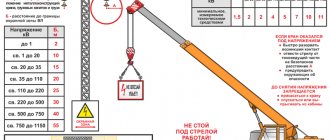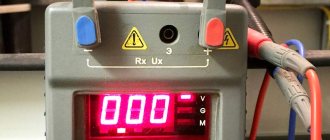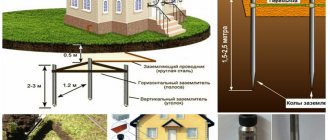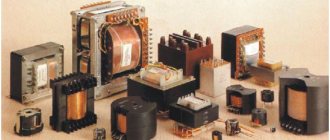Electrical installation work is a rather complex and dangerous undertaking that requires the performer to have knowledge and skills in electrical engineering, compliance with rules and safety precautions. Errors in wiring can lead to serious consequences - short circuit, fire, electric shock. Therefore, it is so important to comply with the main requirements when laying wiring even before the final stage of electrical installation work.
Cable laying requirements
The laying of cable lines is carried out in accordance with regulatory and technical documents indicating the actions necessary to ensure fire and electrical safety of consumers. The list of requirements varies depending on the installation method.
Rules for laying inside a building
Installation indoors is carried out in open and hidden ways. In the first case, it is necessary to use auxiliary means required for reliable installation and protection during operation of the electrical network. In addition, it is important to comply with a number of requirements:
- If the expected voltage is more than 42 V, installation is carried out at a height of 2–2.5 meters from the floor. When using protective boxes and hoses with a degree of protection above IP20, the level is not adjustable;
- When crossing the pipeline, the cable is placed at a distance of more than 50 mm, and it is necessary to use protection from mechanical damage and high temperatures (if there is a heating system nearby). Protection is not needed if the distance to the water source is more than 250 mm;
- In those places where the wire passes through a wall or ceiling (for example, when moving from one room to another), it is inserted into a special pipe;
- Sleeves, boxes, and other protective structures are installed in such a way as to prevent the occurrence of moisture in them. If steam, gas, or dust can be released, sealed elements are used, and the joints are sealed.
Hidden wiring requires compliance with the same conditions as open wiring, but with minor additions. Installation is carried out in boxes, pipes, sleeves or directly in the walls. Laying cables in ventilation shafts and ducts is prohibited (except for the use of steel pipes as protection).
Requirements for external installation
External wiring is carried out through air, underground or in water. Each of these methods has its own characteristics.
When laying cables in the ground:
- Make a trench with a depth of 70 cm, a minimum width of 25 cm. When laying several wires, the distance between them is at least 10 cm;
- A mixture of gravel and sand with a thickness of at least 10 cm4 is poured into the bottom of the trench.
- If the planned voltage is over 35 kV, additional protection of the cable line from mechanical damage in the form of reinforced concrete slabs is required. At a voltage of about 35 kV, brickwork is sufficient;
- The lines are covered with sand (15 cm thick) on top and warning tapes are placed to inform about cable laying;
- The top layer of soil is poured with a reserve, as it will subsequently shrink.
Key points when organizing aerial wiring:
- Overhead line supports should not impede the movement of vehicles and people;
- When installing supports in the forest, the distance from the top of the trees to the bottom sag of the cable is at least 50 cm;
- Grounding of supporting structures and traverses is mandatory.
Rules for installing underwater networks:
- Installation in a water source with stable and erosion-prone soil is allowed.
- The cable runs along the bottom or along the shore without sagging in uneven areas. To prevent the formation of unevenness, embankments are made or trenches are dug;
- A reservoir with a passing wire must have an information board warning about the presence of a power line;
- Crossing multiple cables is not permitted.
IOT - 037 - 2001. Instructions for labor protection when performing electrical installation work
Instructions for labor protection when performing electrical installation work
IOT - 037 - 2001
1. General safety requirements
1.1. Students from the 5th grade who have undergone instruction in labor safety, medical examination and have no contraindications due to health conditions are allowed to perform electrical installation work under the guidance of a teacher (teacher, foreman). 1.2. Students must comply with the rules of conduct, the schedule of training sessions, and the established work and rest schedules. 1.3. When performing electrical installation work, workers may be exposed to the following dangerous and harmful production factors: electric shock when touching bare wires and when working with live devices; hand injury when using a faulty tool: soldering parts, wires using tin-lead solders. 1.4. When performing electrical installation work, the following special clothing and personal protective equipment should be used: a cotton robe, a beret, dielectric gloves, a dielectric mat, a voltage indicator and a tool with insulated handles. 1.5. In the room for electrical installation work there must be a first aid kit with a set of necessary medications and dressings. 1.6. Students are required to comply with fire safety rules and know the location of primary fire extinguishing equipment. There must be a fire extinguisher and a sandbox in the room for electrical installation work. 1.7. In the event of an accident, the victim or eyewitness to the accident is obliged to immediately inform the teacher (teacher, master), who informs the administration of the institution about this. If the equipment or tool malfunctions, stop working and inform the teacher (teacher, foreman) about it. 1.8. While working, follow the rules of wearing special clothing, using individual and collective protective equipment, observe the rules of personal hygiene, and keep the workplace clean. 1.9. Students who fail to comply with or violate labor safety instructions are held accountable and all students are given unscheduled instruction on labor safety.
2. Safety requirements before starting work
2.1. Put on overalls and carefully tuck your hair under your beret. 2.2. Check the condition and serviceability of equipment and tools. 2.3. Prepare the materials and equipment necessary for work and put them in their places, remove everything unnecessary from the work table. 2.4. Prepare personal protective equipment for work and ensure they are in good working order. 2.5. When soldering parts and wires using tin-lead solders, turn on the exhaust ventilation.
3. Safety requirements during operation
3.1. Do not supply voltages higher than 42 VAC or 110 VDC to student desks. 3.2. It is necessary to assemble electrical circuits and make switches in them only in the absence of voltage. Connect the current source last. 3.3. Assemble electrical circuits so that the wires do not cross, are not strained, and are not twisted into loops. 3.4. When soldering, use only rosin as a flux; it is prohibited to use acid. 3.5. The assembled electrical circuit must be energized only after it has been checked by a teacher (teacher, foreman). 3.6. When working with electrical appliances and machines, make sure that your hands, clothing and hair do not come into contact with rotating machine parts and exposed wires. 3.7. Do not check for voltage by touching your fingers; use a voltage indicator for this. 3.8. Do not leave unattended electrical devices unattended 3.9. Strictly follow the labor safety instructions for electrical soldering.
4. Safety requirements in emergency situations
4.1. If damage to the electrical wiring, malfunction of equipment or devices is detected, immediately turn off the power and inform the teacher (teacher, foreman) about this. 4.2. If electrical equipment catches fire, immediately turn off the switch and begin extinguishing the fire with carbon dioxide, powder fire extinguisher or sand. 4.3. If injured, provide first aid to the victim, if necessary, send him to the nearest medical facility and inform the administration of the institution about this.
5. Safety requirements after completion of work
5.1. Disconnect the electrical circuit from the power source. 5.2. Tidy up the workplace, store equipment and tools. 5.3. Carry out a wet cleaning of the room and turn off the exhaust ventilation. 5.4. Remove protective clothing and wash your hands thoroughly with soap.
Safety precautions when laying:
- electrical installation work begins with drawing up a project;
- before starting work, you need to make sure that there is no power supply; use an indicator screwdriver to check;
- place a warning sign on the electrical panel to prevent unauthorized people from accidentally turning on the power;
- It is better to connect devices with high power to separate lines with separate machines;
- sockets are placed at a height of at least one meter at the rate of one socket per 6 m2 of room (except for the kitchen, where at least five are needed);
- laying is carried out only horizontally and vertically, the cable should not come into contact with metal structures;
- To branch the lines, distribution boxes are used, the ends are connected by soldering or terminals.
Independent wiring is possible only if you have experience and knowledge in this area, otherwise there is a high risk of causing damage to yourself, loved ones and property. If you doubt your abilities, do not take risks, but invite a specialist in electrical installation work.
Title: Headphones are a means to hear sound and protect yourself from it.
Description: There are dozens of types of headphones on sale in a wide price range. How to choose the best? What to look for?
Instructions for labor protection for electrical equipment installers
1. General safety requirements
1.1. Persons at least 18 years of age who have passed a medical examination, special training, practical training, have an electrical safety group of at least 3, and have passed
- introductory and initial briefings;
-instruction on fire safety;
-: repeated training at the workplace;
- unscheduled and targeted briefings;
-internship.
1.2. An installer of electrical equipment, when independently performing work on electrical installations with voltages up to 1000 V, must have at least safety group III, and above 1000 V - group IV.
1.3. In the process of work, within the deadlines established by the enterprise, the installer must undergo safety instructions, course training in an 18-hour program and pass exams on knowledge of the rules of technical operation of consumer electrical installations and safety rules for the operation of consumer electrical installations.
1.4. The installer of electrical equipment must know the testing periods for protective equipment and devices, the rules of operation and care for them, and be able to use them. It is not permitted to use protective equipment and devices that have expired the inspection period.
1.5. Installers of electrical equipment who use lifting mechanisms, electric and pneumatic tools, sharpening and drilling machines in the course of their main work, as well as those performing work associated with increased danger and harmfulness, must undergo additional training, pass a technical minimum on the design and operation of this equipment, tools, instructions on the rules of safe work performance, and have the appropriate certificate.
1.6. Store paints and varnishes and their solvents used in work in rooms with reliable ventilation and well-closing metal doors, due to their explosion hazard and toxicity.
Containers for storing paints and varnishes and their solvents must be tightly closed. Tools for opening and closing containers must be explosion-proof.
1.7. The installer of electrical equipment must know and comply with safety requirements.
1.8. The installer of electrical equipment must use the following personal protective equipment during work: a cotton suit, leather boots, dielectric gloves and galoshes, safety glasses.
1.9.After working with varnishes and their solvents, you must wash your hands with warm water and soap.
An installer of electrical equipment who violates labor protection requirements is held accountable in accordance with the job descriptions established for each employee in accordance with current legislation.
1.10. Each employee, in accordance with Article 4 of the “Fundamentals of the legislation of the Russian Federation on labor protection”, has the right to refuse, without any unreasonable consequences for him, from performing work in the event of an immediate danger to his life and health until this danger is eliminated.
2.Safety requirements before starting work
2.1. The electrical installer must check:
- work clothes, put them in order, fasten the cuffs of the sleeves.
- Is the workplace and approaches to it sufficiently lit? The light should not blind your eyes.
- serviceability and fastening of the vice and adjust its height in accordance with your height by placing a special wooden grid or stand of the required height in front of the workbench (under your feet) so that the surface of the vice is at the level of the elbow joint. Bench vices and clamps should not have any play, firmly grip the clamped products and have an unfinished notch on the jaws;
- Place hand tools and devices necessary for work, personal protective equipment in convenient and easily accessible places to prevent the possibility of accidentally moving or falling during work.
2.2. Inspect and tidy up the workplace, remove everything that may interfere with work; if the floor is slippery (drenched in oil, paint, water), demand that it be wiped off or do it yourself.
2.3.When working, use only serviceable, dry and clean tools and devices; the blade of the screwdriver must be pulled back and flattened to such a thickness that it fits into the slot of the screw head without a gap;
- wrenches must match the dimensions of the nuts and bolt heads and must not have cracks, gouges, or burrs. The jaws of the keys must be strictly parallel and not rolled up. Sliding keys should not have any slack (play) in the moving parts;
- Needle-nose pliers and pliers should not have chipped, broken jaws or handles. The jaws of the needle-nose pliers must be sharp, and the pliers must have a proper notch;
- supports used for manual riveting, crimping, embossing and other work must be durable and safe;
- pullers must have a rigid structure and not have cracks, bent rods, torn or crumpled threads and ensure that the thrust (tensioning) device is aligned with the axis of the part being removed. The grips of the pullers must provide a tight and reliable grip on the part at the point where the force is applied. Mechanics are required to comply with the requirements for handling tools established by factory instructions.
2.4. The electrical installer should use a special bag or lightweight carrying case to carry the tool. Carrying tools in pockets is prohibited.
2.5. When using lifting mechanisms (hoists, hoists, etc.), check the reliability of their fastening. Make sure that the lifting mechanisms and their load-handling devices are in good condition.
2.6. If you discover a malfunction of equipment, tools, or devices for the workplace, both before starting work and during work, inform the foreman and do not begin work until the problems are resolved. The use of faulty tools is prohibited.
3. Safety requirements during operation
31. During the work process, the electrical equipment installer is obliged to:
- perform only the work assigned by the administration. If the safe way to perform the work is not well known, contact the administration for clarification;
- do not start new (unfamiliar) base work; receive instructions from the master about safe ways to perform it;
- keep your workplace clean and tidy during all working hours; there should be no oil, parts, blanks, scraps or other waste under your feet; while working, be attentive, do not get distracted and do not distract others;
- do not allow persons related to this work to enter the workplace. Do not trust your work to another worker without the master’s permission;
- Having noticed a violation of the instructions by other workers or a danger to others, do not remain indifferent, but warn the worker about the danger or the need to comply with safety rules.
3.2. Before removing electrical equipment for repairs, remove the voltage from the network in at least two places, and also remove the fuses. Proceed with the removal of electrical equipment only after checking that there is no voltage and hanging the “Do not turn on” sign. People are working” on a switch or control key.
3.3. To lift, remove, install and transport heavy (weighing more than 16 kg) units, components and parts, you must use serviceable lifting and transport equipment of appropriate lifting capacity, which you are allowed to work on.
3.4.When working with lifting mechanisms, comply with the requirements of the labor protection instructions for persons using lifting mechanisms controlled from the floor.
3.5. Disassembly and assembly of small units of electrical equipment should be carried out on workbenches, and large ones - on special work tables or stands, cassettes that ensure their stable position.
3.6. Use wrenches only according to the size of the nuts or bolts. When tightening or loosening nuts or bolts, do not place a spacer between the edges of the wrench and the nut, or use levers.
3.7. When removing, pressing and pressing in plug-in units and parts, use pullers, presses and other devices that ensure safe operation.
3.8.When working at a workbench, make sure that its surface is clean, smooth and free of burrs.
3.9. Clamp the workpiece securely in a vice. When installing in a vise, handle heavy parts carefully to avoid injury if they fall.
3.10. When chopping, riveting, chasing and other similar work in which metal particles may fly off, use goggles or a mask with safety glasses.
3.11.When disassembling electric motors, shields, stators, rotors and armatures should be placed on special racks and stands.
3.12. Weld or solder the ends of the windings only with safety glasses.
3.13. Before testing electrical equipment after repair, it must be firmly fixed, grounded (zeroed), and rotating and moving parts must be covered with safety covers.
3.14. When performing work together with several persons, a senior (level) worker must be appointed, who is obliged to coordinate the actions of his fellow workers.
4. Safety requirements in emergency situations
4.1. In the event of any accident or emergency situation that could lead to an accident and an accident, the electrical equipment installer is obliged to immediately take all measures within his power to prevent the possibility of damage (destruction) to the facility and eliminate the danger to human life. At the same time, report the incident to the foreman or immediate supervisor of the work.
4.2. To avoid emergency situations, use only serviceable lifting mechanisms.
4.3. Repair of electrical equipment should only be carried out when the voltage has been removed.
4.4. Each electrical equipment installer must be able to provide first aid. Such assistance is provided immediately, directly at the scene of the incident and in the following sequence:
- First you need to eliminate the source of injury. Providing assistance must begin with the most significant thing that threatens health or life: in case of severe bleeding, apply a tourniquet, and bandage the wound; if a closed fracture is suspected, apply a splint;
- for open fractures, you should first bandage the wound and then apply a splint; in case of burns, apply a dry bandage; in case of frostbite, carefully rub the affected area using soft or fluffy tissues;
- In case of electric shock, it is necessary to immediately free the victim from the action of the current, namely: turn off the switch, cut the wire, pull it back or throw it away with a dry stick or pole. Do not touch the victim while he is under the influence of current. If the victim is unable to breathe, immediately begin cardiac massage and artificial respiration until a doctor arrives.
4.5. After first aid is provided, the victim should be sent or taken to the nearest medical facility.
5. Safety requirements after completion of work
5.1. Disconnect (disconnect) electrical equipment, power tools, lifting machines from the network.
5.2. Place the tools and accessories in the designated storage space.
5.3. Drain the remaining varnishes and solvents into a special tightly closed container.
5.4. Clean up the work area, put it in a metal box with a lid or destroy the rags used during work.
5.5. Wash your hands with warm water and soap.
5.6. Report all problems discovered during work to the foreman.










